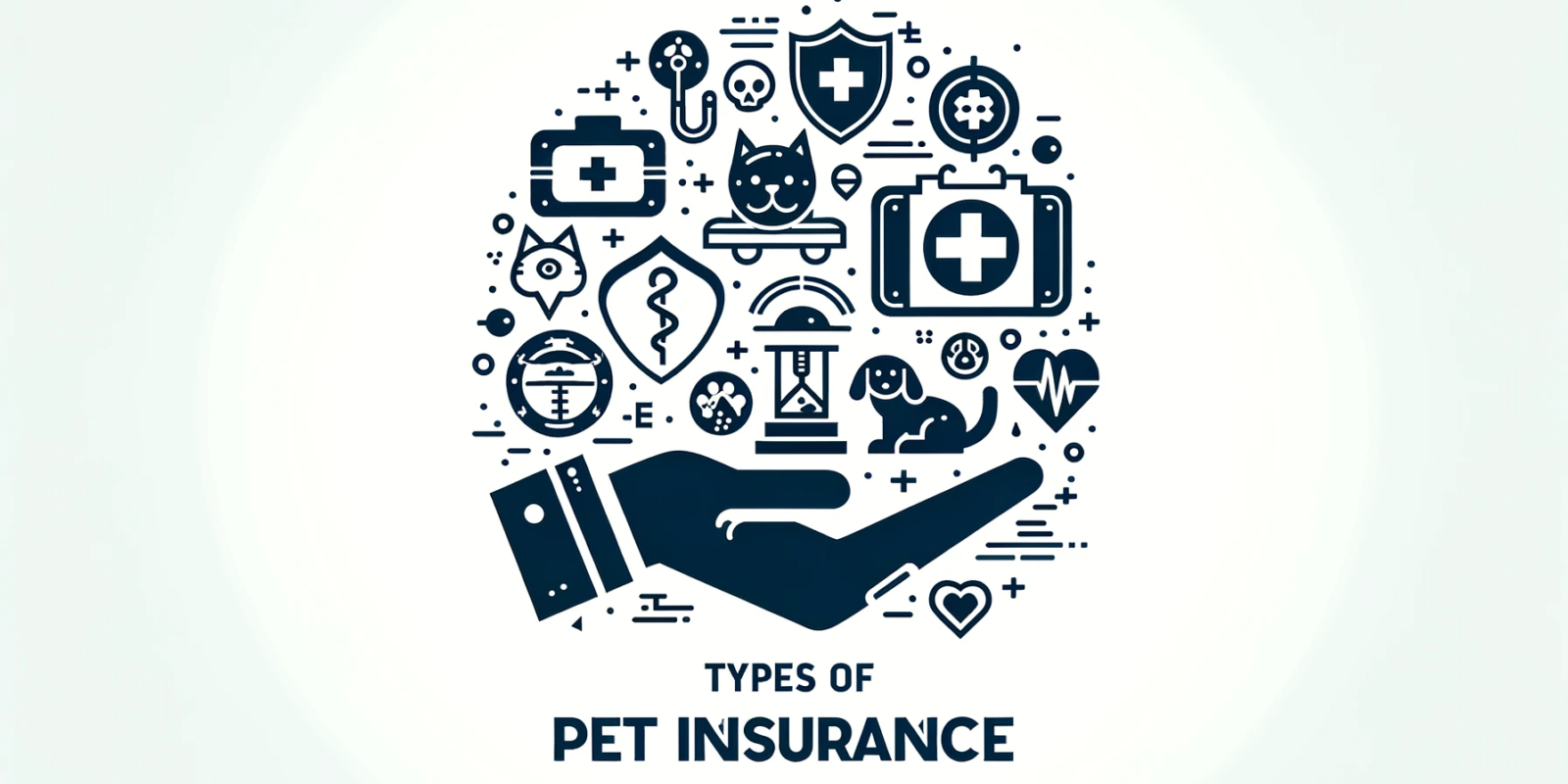Types of pet insurance
1. Accident Only
Accident-only plans cover only that. Due to its restricted coverage, it accounts for just 5% of insurance.
Waggel reports 27% of claims are accident-related. It’s the cheapest, but you can’t claim for sicknesses or diseases.
2. Condition-based (max-benefit & time-covered)
In addition to accidents, condition-based plans cover illnesses and diseases. They have a huge catch: once you claim for a condition, you may only claim up to your maximum or for a particular time period, and then the condition is excluded and you can never claim for it again. Other insurers are unlikely to accept claims for such condition. Two condition-based policies exist: maximum benefit and time-covered.
Maximum benefit: You may claim up to your maximum. After reaching that limit, a condition is removed from your insurance.
Time-covered: Claim for a condition within 12 months. Once the limit or period is surpassed, the condition is not covered.
3. Lifetime
Most pet owners get lifelong pet insurance, which accounts for 80% of coverage. The most comprehensive pet insurance covers care throughout your pet’s life. Any lifetime insurance you choose will have yearly coverage restrictions that renew annually.
Lifetime protection is in the spotlight because forward-thinking pet insurance firms like Waggel only provide it. Why? Lifetime plans insure your pet for life (if you renew). The continuing coverage provides you and your pet peace of mind for reoccurring conditions and mishaps, regardless of age.
How does it work?
Pet insurance may cover veterinarian fees and some drugs for your dog or cat if they become sick or hurt. Your pet insurance usually covers any licensed vet, including emergency and specialty clinics. You’ll claim qualified vet fees following your appointment. Comprehensive policies that cover accidents and injuries usually need a deductible.
How do I insure pets?
Many insurance firms provide pet insurance quotes. To quote, include your pet’s name, type (dog or cat), age, breed, and gender. You must also include your name and address.
Pre-existing conditions are also asked about by pet insurance. Your coverage won’t cover these pre-existing medical issues in your pet. Some insurers demand a checkup and waiting time before coverage. Insurance waiting periods vary by state, insurer, and plan type, although sickness coverage may take weeks and accident coverage a few days.
Pet insurance covers what?
Know how your pet is protected before picking an insurance and plan. Insurance coverages usually fall into three categories and may exclude pre-existing conditions:
- Cuts, lacerations, broken legs, ingestions, and ingested items
- Conditions including arthritis, allergies, skin and ear infections, diabetes, and cancer
- Elbow and hip dysplasia, glaucoma, epilepsy, luxating patella, and cherry eye (if symptoms aren’t apparent before coverage)
- Annual examinations, immunizations, bloodwork, and dental cleanings will cost extra.
- You may pick between accident-only policies for accident-related injuries or complete plans for accidents and diseases.
- Vaccinations, dental treatment, and spaying or neutering may be covered under a pet wellness plan.
How much is pet insurance?
Most pets may be insured for a few hundred dollars a year, depending on the provider and plan. Comprehensive insurance cover accidents and sickness, while accident-only plans are cheaper. Location, deductible, reimbursement level, pet age, and breed affect prices. Discover how pet insurance rates are set.
How prices operate
Pet insurance premiums are either monthly or yearly. Pets Best’s complete accident and sickness plan lets you pick your pet insurance deductible and what percentage of qualifying vet costs to be covered. Higher deductibles and lower reimbursement percentages decrease rates.
If your pet needs care for a covered accident, sickness, or operation, you’ll pay the vet and notify your pet insurance. Remember to preserve your pet’s vet invoice and receipt for your claim. Insurers will examine claims and put monies into bank accounts or issue checks.
Sample: If your pet’s first qualified treatment costs $300 and your pet insurance covers 80% of vet fees, your insurer will refund you $240, less your deductible. If your plan covers 50% and your first vet cost is $300, you’ll get $150 less your deductible.
Is pet insurance worthwhile?
In short, absolutely. Pet owners might expect monthly checks and shots, but unforeseen diseases, accidents, and emergencies can cost thousands. Consider a pet fracture or foreign item ingestion. Anesthesia, surgery, X-rays, and follow-up are costly. Treatment for cancer, congestive heart failure, respiratory difficulties, and gastrointestinal ailments might exceed $5,000. A pet insurance plan gives you peace of mind knowing you can afford necessary care for your pet.
The pet insurance premium and deductible are your responsibility, but you’ll pay a fraction of covered services after reimbursement. Overall, pet insurance is a wonderful choice, especially at a discount. Pets Best provides 5% off a BestBenefit plan when you quote via Progressive and 5% off for multiple pets.
FAQ
- Does pet insurance justify its price? The health, breed, and financial status of your pet are just a few of the variables that determine whether or not pet insurance is worthwhile. It may be useful for paying unforeseen veterinary costs, which can add up to a significant amount. It’s important to weigh the expense of insurance premiums against your capacity to pay for high, unexpected veterinary expenditures.
- I have an elderly pet; can I obtain pet insurance? Yes, older pets can get pet insurance, however your selections could be more limited. Generally speaking, premiums are higher and coverage may be less comprehensive than for insurance for younger dogs.
- Pre-existing illnesses are covered by pet insurance, right? Pre-existing conditions are often not covered by pet insurance coverage. But if a problem is treatable and your pet hasn’t had any symptoms for a certain amount of time, some plans could pay for treatment. It’s crucial to review each insurer’s policy terms.

